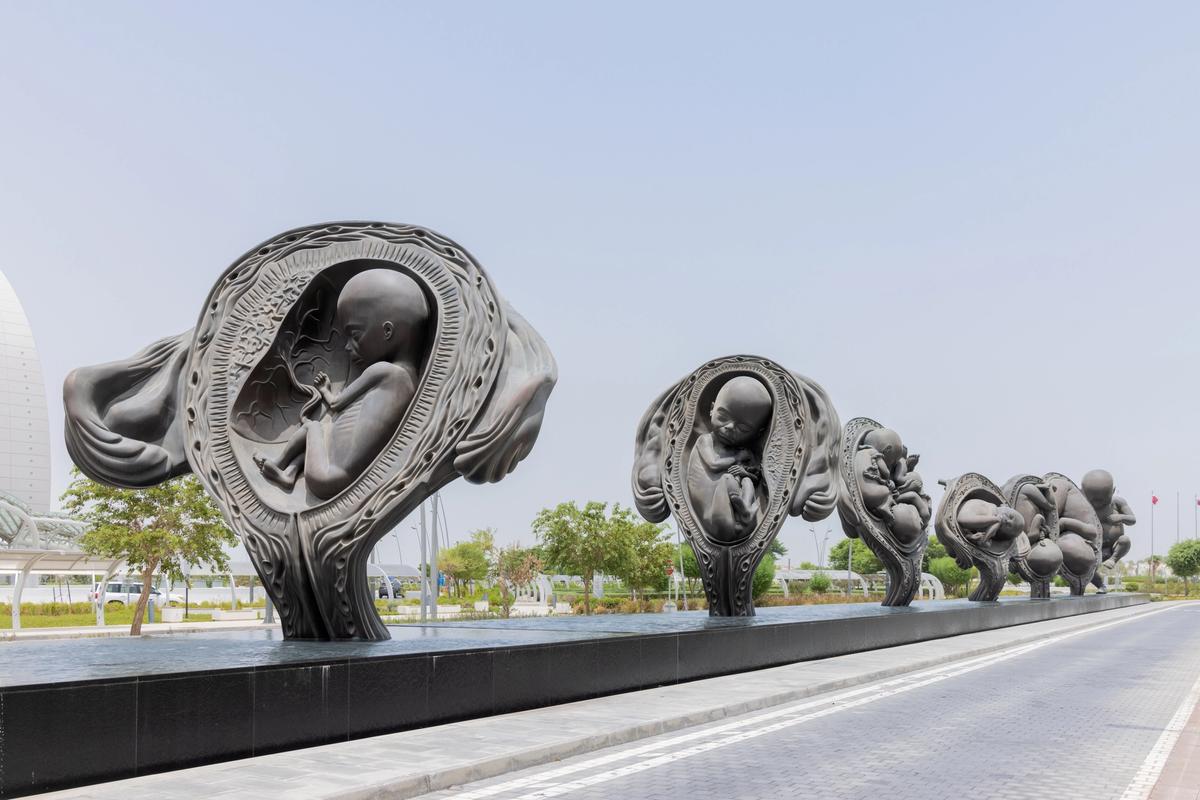Introduction
A new publication, “The Guardians of Art: Conversations with Major Collectors,” authored by collector Dani Levinas, offers a captivating glimpse into the realm of art collecting through rare insights shared by Sheikha Al-Mayassa bint Hamad bin Khalifa Al Thani, the distinguished chair of Qatar Museums. This unprecedented interview delves into Al-Mayassa’s perspectives on art, her influence on the global art scene, and her vision for cultural preservation.

A Quiet Powerhouse Emerges
In 2006, Sheikha Al-Mayassa bint Hamad al Thani rose to prominence as a formidable force in the art world. Appointed by her father, the then ruling emir, to oversee Qatar Museums, she assumed a position of immense influence. Al-Mayassa, renowned for her reticence to grant interviews, offers an illuminating dialogue that unveils her thoughts on a range of critical issues.
Navigating the Artistic Landscape
The conversation commences with Al-Mayassa’s role in shaping the Qatar National Museum’s architectural blueprint. Al-Mayassa candidly discusses how she collaborated with renowned architect Jean Nouvel to modify plans, ensuring a harmonious integration of the museum with its surroundings. Her insights underscore her dedication to preserving the essence of both art and architecture.

Market Dynamics and Controversies
With a discerning eye, Al-Mayassa delves into the dynamics of the art market. She eloquently addresses the inherent volatility and susceptibility to overheating within the art ecosystem. A focal point of the discussion is the controversial work of Damien Hirst, particularly his monumental “The Miraculous Journey” sculptures. Al-Mayassa reflects on the reception of these artworks in Doha and the nuanced responses they evoked.

A Dynamic Force in the Art World
Recognized as one of Forbes magazine’s 100 most powerful women globally, Sheikha Al-Mayassa’s influence resonates far beyond the walls of Qatar Museums. As the sister of the Emir of Qatar, her strategic stewardship has redefined the art landscape. Al-Mayassa’s substantial financial backing has facilitated the acquisition of artworks with a budget that has disrupted conventional market norms.
A Cultural Visionary’s Journey
Rooted in her passion for the creative realm, Al-Mayassa unveils a facet of her life less known. While she did not study art academically, her fervor for the arts finds its roots in Political Science and Literature. Her perspectives underscore the intrinsic connection between diverse fields and the power of knowledge to enrich human existence.
Championing Dialogue and Diversity
A pivotal aspect of Al-Mayassa’s approach is fostering dialogue and understanding. She sheds light on the cultural and religious sensitivities surrounding art. Al-Mayassa’s handling of Damien Hirst’s sculptures exemplifies her commitment to fostering conversations that transcend controversy, ultimately broadening the appreciation of art’s diverse expressions.
A Vision for the Future
Al-Mayassa’s influence extends beyond acquisitions; it encompasses the very philosophy of art enjoyment. Her dedication to the long-term and her avoidance of conflicts of interest underscore her commitment to sustainable cultural preservation. Her belief in deciphering the motivations behind creative works, rather than merely accepting their existence, resonates deeply.
Vision 2030: All You Need to Know about Saudi Arab’s Burgeoning Art Scene

Contributor





